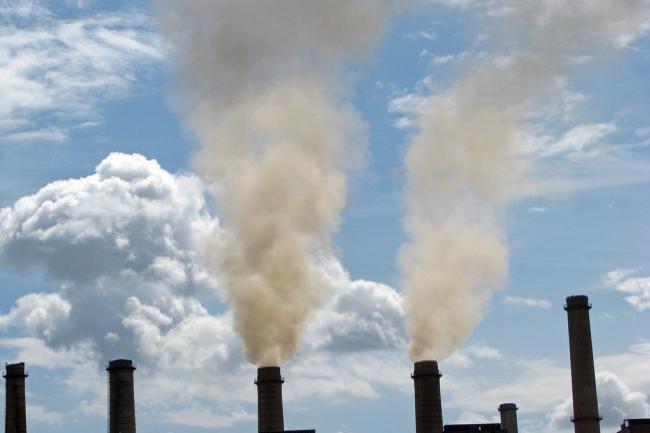
Greenhouse gas concentrations hit yet another record: UN weather agency
“Every year we report a new record in greenhouse gas concentrations,” said WMO Secretary-General Michel Jarraud in a press release.
He said, “Every year we say that time is running out. We have to act now to slash greenhouse gas emissions if we are to have a chance to keep the increase in temperatures to manageable levels.”
WMO’s Greenhouse Gas Bulletin, released ahead of the UN climate conference this December in Paris, says that between 1990 and 2014 there was a 36 per cent increase in radiative forcing – the warming effect on our climate – because of long-lived greenhouse gases such as carbon dioxide (CO2), methane (CH4) and nitrous oxide (N2O) from industrial, agricultural and domestic activities.
The report also highlights the interaction and amplification effect between rising levels of CO2 and water vapour, which is itself a major greenhouse gas, albeit short-lived.
Warmer air holds more moisture and so increased surface temperatures caused by CO2 would lead to a rise in global water vapour levels, further adding to the enhanced greenhouse effect. WMO notes that further increases in CO2 concentrations will lead to disproportionately high increases in thermal energy and warming from water vapour.
Meanwhile, the study shows that atmospheric concentrations of CO2 – the most important long-lived greenhouse gas – reached 397.7 parts per million (ppm) in 2014.
In the Northern hemisphere CO2 concentrations crossed the symbolically significant 400 ppm level in 2014 spring, when CO2 is most abundant. In spring 2015, the global average concentration of CO2 crossed the 400 ppm barrier.
“We will soon be living with globally averaged CO2 levels above 400 parts per million as a permanent reality,” Jarraud continued.
He said, “We can’t see CO2. It is an invisible threat, but a very real one. It means hotter global temperatures, more extreme weather events like heatwaves and floods, melting ice, rising sea levels and increased acidity of the oceans. This is happening now and we are moving into unchartered territory at a frightening speed.”
“Excess energy trapped by CO2 and other greenhouse gases is heating up the Earth surface which leads to increase in atmospheric water vapour which in turn is generating [and] trapping even more heat,” he added, underlining that carbon dioxide remains in the atmosphere for hundreds of years and in the ocean for even longer.
“Past, present and future emissions will have a cumulative impact on both global warming and ocean acidification. The laws of physics are non-negotiable,” Jarraud warned.
The WMO Greenhouse Gas Bulletin reports on atmospheric concentrations – and not emissions – of greenhouse gases.
Emissions represent what goes into the atmosphere while concentrations represent what remains in the atmosphere after the complex system of interactions between the atmosphere, biosphere, cryosphere and the oceans.
According to WMO, about a quarter of the total emissions is taken up by the oceans and another quarter by the biosphere, reducing in this way the amount of CO2 in the atmosphere.
Photo: World Bank/Lundrim Aliu/www.justearthnews.com
Support Our Journalism
We cannot do without you.. your contribution supports unbiased journalism
IBNS is not driven by any ism- not wokeism, not racism, not skewed secularism, not hyper right-wing or left liberal ideals, nor by any hardline religious beliefs or hyper nationalism. We want to serve you good old objective news, as they are. We do not judge or preach. We let people decide for themselves. We only try to present factual and well-sourced news.







